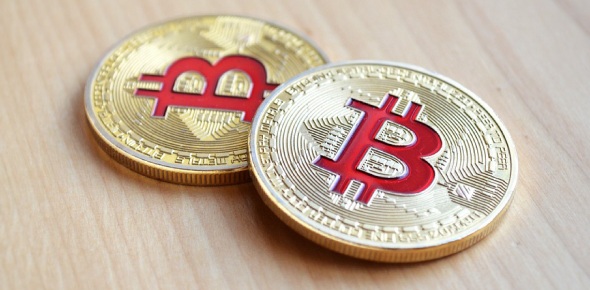Test Your Bitcoin Knowledge With The Bitcoin Trivia Quiz!

Here are a quick 7 questions with TRUE/FALSE simple answers to check how much you know about Bitcoin.
Questions and Answers
- 1.
The maximum number of Bitcoin that will ever be created is 32 million.
- A.
True
- B.
False
Correct Answer
B. FalseExplanation
The statement is false because the maximum number of Bitcoin that will ever be created is 21 million, not 32 million. This is a fundamental rule of the Bitcoin protocol, which ensures scarcity and helps maintain its value over time. Once 21 million Bitcoins have been mined, no more can be created, making it a finite and limited asset.Rate this question:
-
- 2.
An orphan block is only created when a 51% attack is successful.
- A.
True
- B.
False
Correct Answer
B. FalseExplanation
An orphan block is not created when a 51% attack is successful. An orphan block is a block that is valid and mined by a miner but is not included in the main blockchain because another miner found and added a different block to the chain at the same time. This can happen in a decentralized network when multiple miners find blocks simultaneously. A 51% attack refers to a situation where a single miner or group of miners controls more than 50% of the network's mining power, allowing them to manipulate the blockchain. However, this does not directly result in the creation of orphan blocks.Rate this question:
-
- 3.
Approximately every 10 minutes, a new block is created that contains latest transactions.
- A.
True
- B.
False
Correct Answer
A. TrueExplanation
In blockchain technology, new blocks are created approximately every 10 minutes. These blocks contain the latest transactions that have been verified and added to the blockchain. This process is known as mining, where miners compete to solve complex mathematical problems to create new blocks. Once a block is created, it is added to the existing chain of blocks, forming a chronological record of all transactions. Therefore, the statement is true.Rate this question:
-
- 4.
In the Bitcoin protocol, “natural deflation” has been defined as the normal rate of reduction in the number of bitcoins because of lost wallets.
- A.
True
- B.
False
Correct Answer
A. TrueExplanation
The given statement is true. In the Bitcoin protocol, "natural deflation" refers to the gradual reduction in the number of bitcoins due to lost wallets. When users lose access to their wallets or forget their passwords, the bitcoins stored in those wallets become inaccessible and are effectively removed from circulation. This loss of bitcoins over time contributes to a decrease in the overall supply, leading to a natural deflationary effect in the Bitcoin ecosystem.Rate this question:
-
- 5.
A bitcoin address collisions is when 2 different payments are made at the same time to the same Bitcoin address.
- A.
True
- B.
False
Correct Answer
B. FalseExplanation
A bitcoin address collision is not when 2 different payments are made at the same time to the same Bitcoin address. In fact, bitcoin addresses are designed to be unique and collisions are extremely unlikely. Each address represents a specific recipient and any payments made to that address are recorded on the blockchain as separate transactions. Therefore, the correct answer is false.Rate this question:
-
- 6.
Cryptographic Hash function transforms an arbitrary length of text into a fixed-length string of numbers that acts more or less as a “fingerprint” of the document.
- A.
True
- B.
False
Correct Answer
A. TrueExplanation
A cryptographic hash function is designed to take any input, regardless of its length, and produce a fixed-length string of numbers. This string, known as the hash value, serves as a unique identifier or "fingerprint" of the original document. The key characteristic of a cryptographic hash function is that even a small change in the input will produce a significantly different hash value. This property makes it useful for verifying the integrity of data, as any alteration in the original document will result in a completely different hash value. Therefore, the given statement is true.Rate this question:
-
- 7.
The bitcoin address is nothing more than the public key of an asymmetric encryption
- A.
True
- B.
False
Correct Answer
B. FalseExplanation
The correct answer is False. The bitcoin address is not the public key of an asymmetric encryption. In fact, a bitcoin address is derived from a public key through a series of cryptographic operations. The public key is used to verify transactions and ensure the integrity of the bitcoin network, while the bitcoin address is used to receive funds and identify the recipient in a transaction.Rate this question:
-
Quiz Review Timeline +
Our quizzes are rigorously reviewed, monitored and continuously updated by our expert board to maintain accuracy, relevance, and timeliness.
-
Current Version
-
Mar 21, 2023Quiz Edited by
ProProfs Editorial Team -
Jun 26, 2014Quiz Created by
Catherine Halcomb
 Back to top
Back to top


